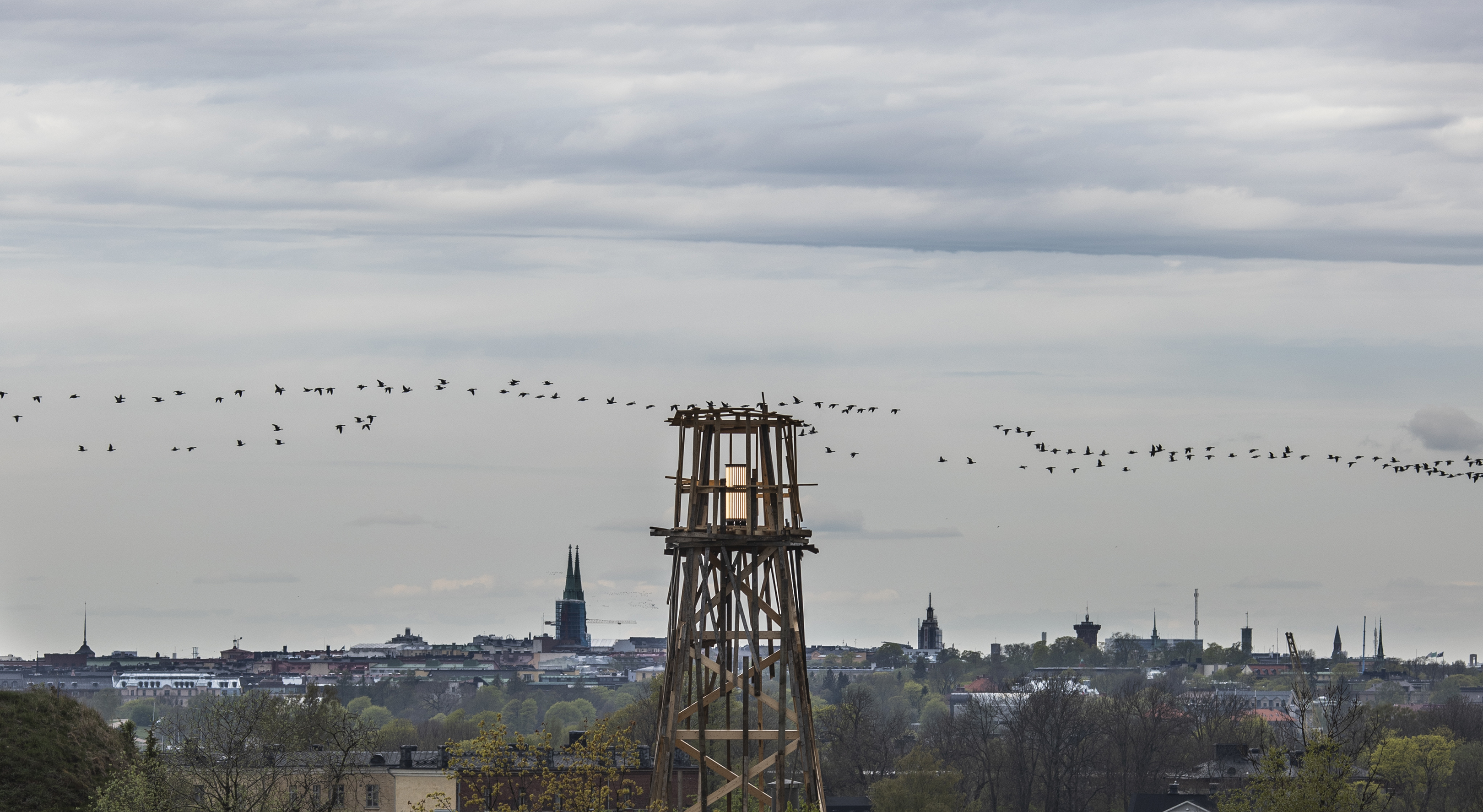Tadashi Kawamata uses works constructed from reclaimed materials to make us see our surroundings in a new way.
Tadashi Kawamata (b. 1953) builds appendages, like parasites, to existing buildings from scrap and other reclaimed materials. The artist wants to use his works to shape the public space. His subtle gestures and full-scale redefinitions provide us with new insights into the spaces that surround us. As the works refocus our attention, we may see things that have always been there for the first time.
Kawamata’s works are constructed in carefully selected locations, often through collaborative processes. It is important for the artist to execute or build his sculptural works together with local groups. The materials he collects eventually take form in a variety of shapes, such as huts, nests, chimneys or connecting bridges. Kawamata has created his works around the world, for example at the Palace of Versailles, where the artist covered one of the buildings with thousands of wooden vegetable and fruit boxes that he collected from local merchants.

Tadashi Kawamata: Vallisaari Lighthouse, 2021 ©Maija Toivanen/HAM/Helsinki Biennial 2021
Vallisaari Lighthouse, 2021
For the biennial, Kawamata has built a temporary landmark using scrap lumber and other waste found on the island. Vallisaari Lighthouse can be seen from far at sea and also from the neighbouring island of Suomenlinna and the Helsinki waterfront. The tower sits atop a bunker-like elevator shaft, jutting skywards to a height of several metres. Its imaginary roots are embedded deep in the earth, as the elevator shaft is connected to numerous subterranean passageways. The artist was inspired by the island’s underground tunnel network and its lack of human habitation.
Photo 1: Matti Pyykkö/Helsinki Biennial 2021
Tadashi Kawamata
Vallisaari Lighthouse
2021
Site-specific installation
Commissioned by HAM/Helsinki Biennial 2021